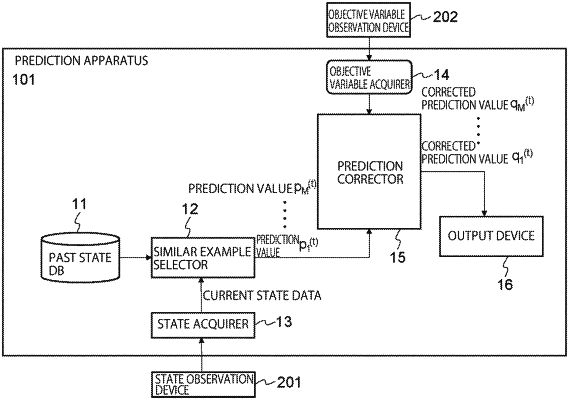| CPC G06F 18/2132 (2023.01) [G01W 1/10 (2013.01); G05B 13/042 (2013.01); G05B 13/048 (2013.01)] | 16 Claims |

|
1. An information processing apparatus, comprising:
a processor configured to select a first case from among a plurality of cases, each of which includes a pair of: first data including at least one feature at a time; and a value of an objective variable after a predetermined time from the time, based on subject data including at least one feature at a current time, and acquire a first prediction value that is the value of the objective variable included in the first case, wherein the at least one feature in the first data of each case and the at least one feature in the subject data each includes at least one meteorological variable, and the objective variable indicates a weather state;
a first estimator configured to estimate frequency data indicating frequencies of observation values of the objective variable, based on a history of observation values of the objective variable, the frequency data being a cumulative distribution function, a probability density distribution, or a histogram;
a second estimator configured to estimate first frequency data indicating frequencies of first prediction values, based on a history of first prediction values acquired before the first prediction value is acquired, the first frequency data being a cumulative distribution function, a probability density distribution, or a histogram; and
a corrector configured to correct the first prediction value acquired by the processor, based on the frequency data and the first frequency data to obtain a predicted value of the weather state after the predetermined time from the current time,
wherein
the processor is configured to further select second to k-th cases, and acquire second to k-th prediction values that are values of the objective variable included in the second to k-th cases, respectively,
the second estimator is configured to estimate second to k-th frequency data indicating frequencies of the second to k-th prediction values, based on histories of the second to k-th prediction values, and
the corrector is configured to correct the second to k-th prediction values acquired by the processor, based on the frequency data and the second to k-th frequency data, respectively.
|